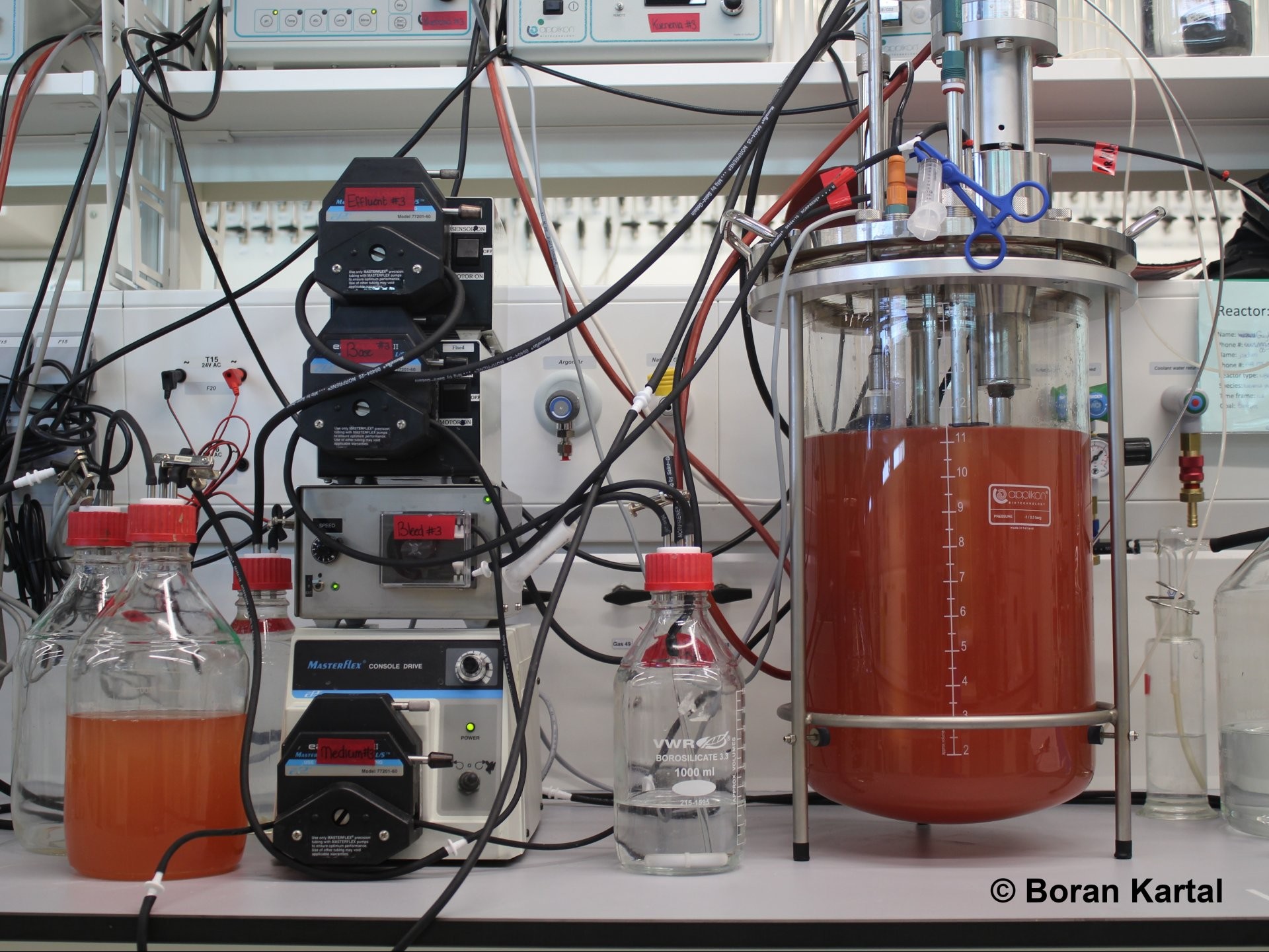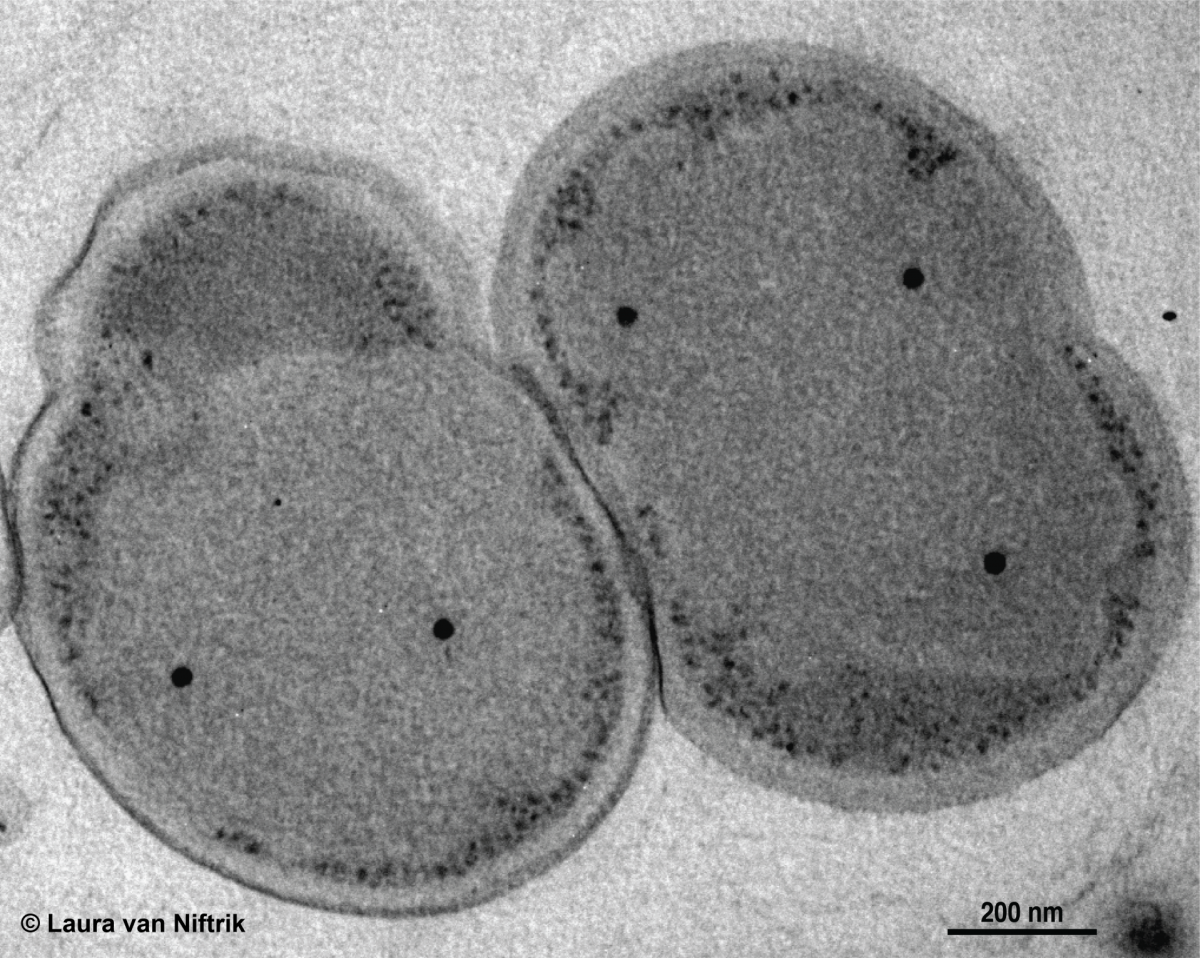- Press Office
- Press releases 2019
- Microbes can grow on nitric oxide (NO)
Microbes can grow on nitric oxide (NO)
Nitric oxide is a fascinating and versatile molecule, important for all living things as well as our environment: It is highly reactive and toxic, it is used as a signaling molecule, it depletes the ozone layer in our planet’s atmosphere and it is the precursor of the greenhouse gas nitrous oxide (N2O). Nitrogen oxides are also pollutants discharged with exhaust gases, for example from combustion engines in cars, and are harmful to human health.
Intriguingly, long before there was oxygen on Earth, nitric oxide was available as a high-energy oxidant, and might have played a fundamental role in the emergence and evolution of life on Earth. A study by Max-Planck-scientist Boran Kartal and colleagues now published in Nature Communications sheds a new light on microbial transformations of this molecule.

Yes they can – with implications for our climate
One major question about nitric oxide remained unanswered up to now: Can organisms use it to grow? “One would think so,” Kartal explains, “as nitric oxide has been around since the emergence of life on earth.” However, no microbe growing on NO has been found - until now. Kartal and his colleagues from Radboud University in the Netherlands have now discovered that the anaerobic ammonium-oxidizing (anammox*) bacteria directly use NO to grow. In detail, these microorganisms couple ammonium oxidation to NO reduction, producing nothing but dinitrogen gas (N2) in the process.
The latter – the sole production of N2 – is particularly intriguing: Some microbes convert NO to nitrous oxide (N2O), which is a potent greenhouse gas.N2, in contrast, is harmless.Thus, each molecule of NO that is transformed into N2 instead of N2O is one less molecule adding to climate change.
“In this way, anammox bacteria reduce the amount of NO available for N2O production, and reduce the amount of released greenhouse gas”, Kartal explains.
“Our work is interesting in understanding how anammox bacteria can regulate N2O and NO emissions from natural and man-made ecosystems, such as wastewater treatment plants, where these microorganisms contribute significantly to N2-release to the atmosphere.”
* What is anammox?
Anammox, short for anaerobic ammonium oxidation, is a globally important microbial process of the nitrogen cycle. It takes place in many natural and man-made environments. In the process, nitrite and ammonium ions are converted directly into dinitrogen and water and nitrate.
Anammox is responsible for approximately 50% of the N2 gas produced in the oceans. It thus removes large amounts of bioavailable nitrogen from the seas. This nutrient nitrogen is then no longer available to other organisms; this way anammox can control oceanic primary productivity.
The anammox process is also of interest in wastewater treatment. Removing nitrogen compounds with the help of anammox bacteria is significantly cheaper than traditional methods and reduces emissions of the greenhouse gas CO2.
Rethinking the nitrogen cycle
Nitric oxide is a central molecule in the global cycling of nitrogen. “These findings change our understanding of the earth’s nitrogen cycle. Nitric oxide has been primarily thought of as a toxin, but now we show that anammox bacteria can make a living from converting NO to N2”, says Kartal. The present study raises new questions. “Anammox, a globally important microbial process of the nitrogen cycle relevant for the earth’s climate, does not work the way we assumed it did.” Moreover, other microbes than the ones investigated here could be using NO directly as well. Anammox bacteria are found all over the planet. “In this sense, the anammox microbes growing on nitric oxide could also be basically everywhere”, Kartal continues.
One answer, many new questions
Now, Kartal and his group at Max Planck Institute in Bremen are exploring different ecosystems from all around the world, hunting for specialized nitric oxide converting microorganisms. They want to understand better how microbes use NO in environments both with and without oxygen. This will probably pave the way to the discovery of new enzymes involved in nitric oxide transformation. “Basically, we want to understand how organisms can make a living on NO.”
Fanni Aspetsberger
Original publication:
Ziye Hu, Hans JCT Wessels, Theo van Alen, Mike SM Jetten and Boran Kartal: Nitric oxide-dependent anaerobic ammonium oxidation. Nature Communications. DOI: 10.1038/s41467-019-09268-w
Participating institutions:
- Max Planck Institute for Marine Microbiology, Bremen, Germany
- Radboud University, Nijmegen, The Netherlands
Please direct your queries to:
Group leader
Microbial Physiology Research Group
MPI for Marine Microbiology
Celsiusstr. 1
D-28359 Bremen
Germany
|
Room: |
3126 |
|
Phone: |

Head of Press & Communications
MPI for Marine Microbiology
Celsiusstr. 1
D-28359 Bremen
Germany
|
Room: |
1345 |
|
Phone: |

